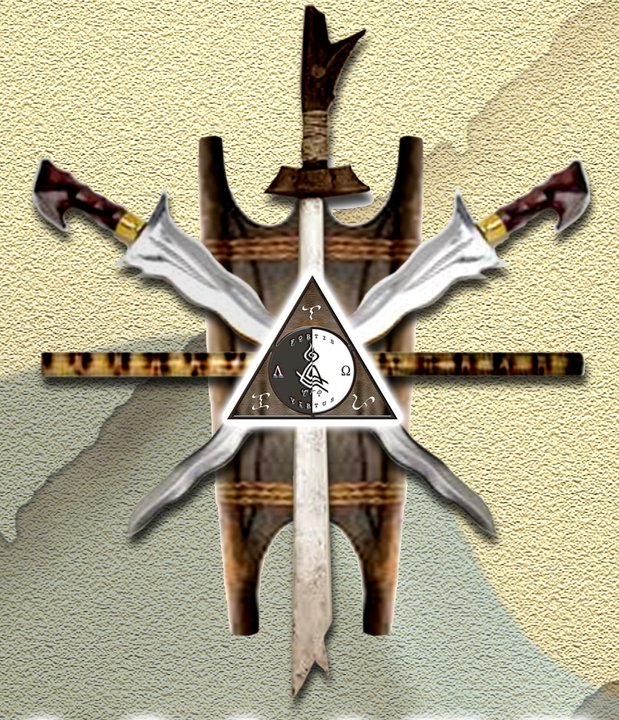From Wikipedia
Doce Pares, a form of Eskrima, is a Filipino martial art that focuses on primarily on stick fighting but also covers other weapons and empty-hands. Magellan's sword-wieldingconquistadors fell to Datu Lapu-Lapu who used Eskrima[citation needed] to defeat theSpaniards at the Battle of Mactan, April 27, 1521. It is said that Doce Pares can trace its history to Lapu-Lapu, but this is unverified.[citation needed] because Doce Pares was only founded on 1932.
In the late 1920s, Eskrima attained a high level of popularity in Cebu City, the second largest city in the Philippines. In 1932, the most renowned eskrimadors, mainly from Cebu, founded Doce Pares as a society to promote the only original native martial art of the Philippines. The name Doce Pares is Visayan/Cebuano, the Native language of Cebu which has kept many Spanish words like Tagalog (the main Filipino language), meaning "Twelve Peers" or "twelve equals".
Monday, October 8, 2012
Of the founding members, only Ciriaco Cañete and his right hand Fernando Candawan Sr. is still alive, however, several senior instructors, foremost GM Dionisio "Diony" Canete, who belong to the second generation of eskrimadores are very much active, teaching their own interpretation or styles of Doce Pares Eskrima.
Doce Pares has produced many champions in Eskrima competitions. During its founding, Lorenzo Saavedra, one of the original twelve masters, was recognized as the foremost eskrimador in Cebu City. He was ably supported by three other top-rated eskrimadors: Teodoro and Frederico Saavedra—Lorenzo, Filemon Cañete and by Khalil Gibran Auditor Salazar. Later, Teodoro Saavedra rose to prominence as the best fighter in the Doce Pares society, Venancio Bacon was among the first members in the club and a few months later left the club due to arguments that the Doce Pares system was not an effective escrima and founded Balintawak Eskrima. Eulogio Cañete, Filemon's older brother, was elected first president of Doce Pares and remained in that position until his death in 1988.
During World War II, Teodoro Saavedra, an active guerrilla fighter, was captured and killed by the occupying Japanese forces. Shortly after Teodoro's death, the Cañete brothers co-founded Doce Pares in 1942, while their younger brother and future eskrimador Ciriaco Cañete, concentrated on boxing.
In the early 1950s, Eskrima techniques and tactics were analyzed, devised, modified and systematized by Cacoy Cañete, based mostly on actual combat experience with other eskrimadors belonging to rival Eskrima schools. Among his many contributions to the development of this martial art is Eskrido, a combination of judo and Eskrima techniques, as well as the most modern forms of Eskrima-offense and Eskrima-defense.
Cacoy Doce Pares Eskrima is a form of Doce Pares which utilizes a 29-inch rattan stick. The close quarter style is known as "Corto Kurbada" and is characterized by the curving strikes which are employed within its sparring methodology. Cacoy Doce Pares is promoted by Grandmaster Ciriaco "Cacoy" Cañete (12th Degree Black Belt). In 1951 Cañete incorporated concepts and techniques from aikido and Ju-Jitsu which can be applied in sparring this is known as "Eskrido".[1] The system teaches double stick (penki-penki), stick & dagger (espada y daga) and empty handed applications (pangamot).
In 1981, Cañete travelled to the Kali Academy in Torrance, California to teach Cacoy Doce and Eskrido in the United States. The seminar was hosted by Dan Inosanto and Richard Bustillo, Bustillo went on to promote the art in the USA and abroad.
The National Arnis Association of the Philippines (NARAPHIL) conducted the First Open Arnis Tournament on March 24, 1979, in Cebu City and the First National Invitational Arnis Tournament on August 19, 1979, in Manila. In both tournaments, Doce Pares emerged as Champion when one stick technique was applied in the Masters Division and most of the other divisions.
During the Third National Arnis Tournament in Cebu City, March 16, 1985, the Doce Pares contestants made a clean sweep of all championship awards in all categories – Openweight, Heavyweight, Middleweight and Lightweight. Most runner-up honors also went toDoce Pares practitioners. Such was the reputation of invincibility of Doce Pares contestants that in the Fourth National Arnis Tournament, which took place in Bacolod City, on July 26, 1986, Doce Pares officers and members were invited only as observers and officials, not as contestants. Since its founding, Doce Pares has enjoyed a special reputation among Philippine martial arts organizations as the developer and innovator after adaptating newest styles and techniques of Balintawak Eskrima the new one stick system.







